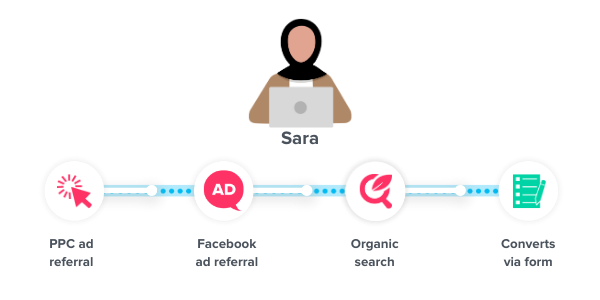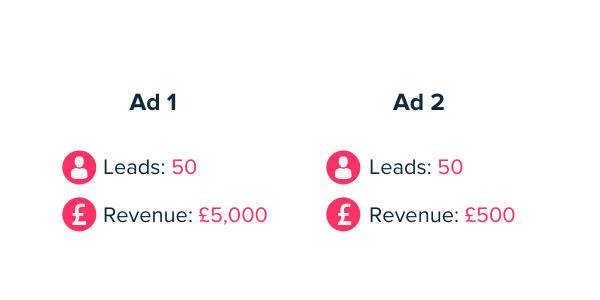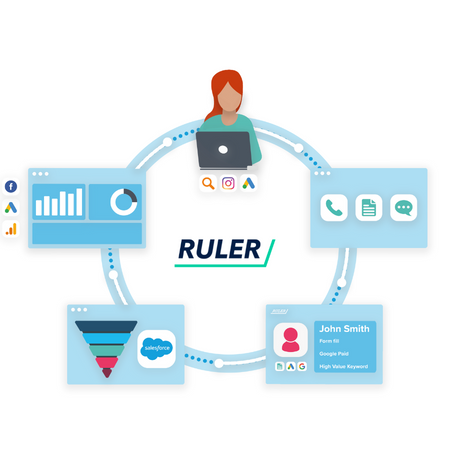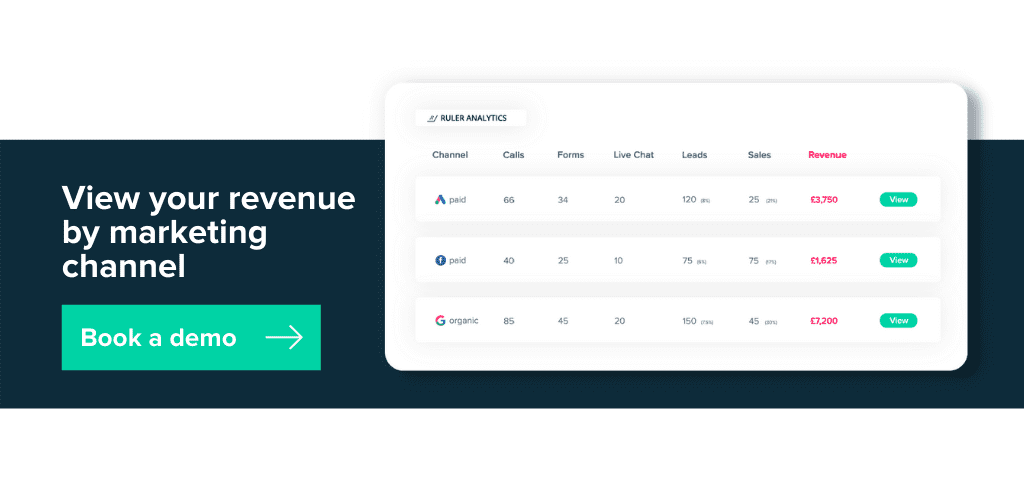Google Analytics 4, when used correctly, can open up key data for marketers. But without the right integrations and tools, four key pieces of data are left locked away. We share what they are and how you can access them to start making data-driven decisions.
It’s estimated that between 30-50 million websites use Google Analytics to track their user activity.
In our recent survey of over 200 marketers, we found that only 23% of marketers are confident they’re tracking the right KPIs.
Don’t get us wrong, GA4 is a staple tool for any marketer.
But with 40% of marketers stating that more accurate data would improve their marketing outputs, there’s an issue with the data they have at their disposal.
So, what is the issue with the data in Google Analytics 4 and how can you take it to the next level?
In this blog, we’ll discuss:
Let’s dig in.
Google Analytics 4 is a great tool that can help you track key actions taken on your website, particularly when it comes to events. If you want to track how users engage with on their session, then Google Analytics is the tool for you.
Related: Limitations of Google Analytics
But what if you’re not an eCommerce business?
While they can easily track sales generated from their website, how do those with offline conversions manage?
The first major issue with Google Analytics 4 is a lack of ability to track lead volume accurately. Tracking form fills can be done with a little work.
Phone call tracking relies on call tracking software, while live chat volume can be done within your chat tool.
⚡️ Pro Tip
Remember, tracking offline conversions or conversions like live chat doesn’t need to be hard work. Learn exactly how to link conversions properly to Google Analytics 4.
But while these might give you insight into the volume of leads you’re generating, how are you attributing these back to your marketing channels?
Let’s use an example.
Sara visits your website for the first time via a PPC ad.
She doesn’t convert.
While Google Ads and GA4 will track her session, that’s all they’ll track.
When she returns via a Facebook paid session, that’s all they’ll track too.
When she returns via an organic search and converts via a form fill, what will be tracked?

In Google Analytics, if you’ve set up form tracking, then you’ll see one new lead.
But you won’t see that the last click was organic. And you certainly won’t know that she had also engaged with two paid adverts.
Don’t worry, there is a way around it. Keep reading to find out.
Another issue with lead tracking in Google Analytics is that you can’t understand lead quality. Let’s use another example.
You might drive 50 new leads via a PPC campaign (that’s assuming you’re able to attribute those leads back to PPC). But all you’ll see in Google Analytics is 50 new leads.
Meanwhile, in your CRM, your sales team is struggling to convert them. In the end, you only gain 5 new customers with total revenue of £500.
Now, compare this to a second PPC campaign. Again, you drive 50 new leads. But this time, sales convert 25 of them into a total revenue of £5,000.

If you’re assessing these two campaigns in Google Analytics or Google Ads, you’re going to assume they’ve performed equally well because they drove the same number of leads.
But in actuality, they drove very different results. This is data you can’t see in Google Analytics 4 (or Google Ads).
We know customer journeys are getting longer. According to Think with Google, it could take as many as 500 touchpoints to convert a prospect interested in buying flights.
So, how can you track multiple, or potentially hundreds of touchpoints in GA4? Well, simply, you can’t. Google Analytics tracks sessions, not visitors, so you can’t build up customer journeys.
Lack of customer journey tracking also means a big impact on your paid reporting too. Just look at our earlier example.
Sara engaged with two paid adverts before converting. But she converted via a direct session. So, even if you could attribute her direct conversion, you’d completely miss the impact of the paid channels.
This is data you just can’t see within GA4 (or even Google Ads). Here’s how to optimise your Google Ads campaigns with offline conversion tracking if you’re stuck.
🚀 Pro Tip
Struggle to understand the data between Google Analytics and Google Ads? Here’s a handy guide to solving the data discrepancy between the two.
So, what’s the solution?
Marketing attribution is the missing link when it comes to getting more out of your data.
Related: How to start making data-driven decisions in marketing
From tracking every conversion and every lead to linking your closed revenue to your marketing channels, campaigns and keywords.
Ruler Analytics combined with Google Analytics allows you to see the data you need.

Here’s how it works. Let’s use the same example as before.
Sara visits your website from a PPC ad. Ruler tracks Sara and stores her lead source data as well as other key information like which pages she engaged with.
Sara visits again, and Ruler again tracks her, adding this session to her customer journey. Next, she visits via an organic search. Ruler tracks her visit and, when she converts, via a form, tracks all of her inputted data.
At this point, Ruler fires all the information held on Sara over to your CRM.
A few weeks later, when Sara converts, Ruler scrapes the revenue data against her in your CRM and fires it to your analytics tools, like Google Analytics.
So, in GA, you can see the amount of revenue generated by channel, campaign and keyword.
And in Ruler, you can see Sara’s full customer journey and swap attribution models to better understand the roles your channels play in converting leads into revenue.
Sound good? Find out more about how Ruler Analytics can support your marketing strategy, or book a demo with our team to see it in action.
Let Ruler do the hard work and connect the dots between data held across different sources and tools to give you one single source of truth.
